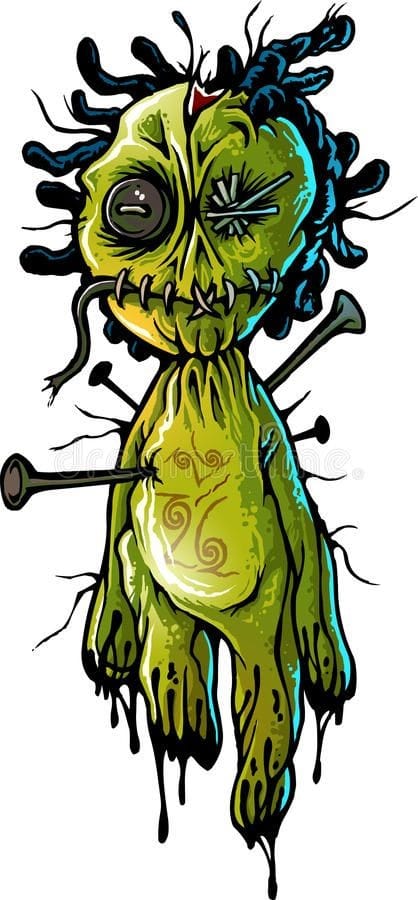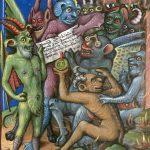
Dolls have been used in magical rites since the origins of Man. Little wonder then that witches were said to have used them as well.
Typically, these dolls were created by putting some of the victim’s nail clippings or hair into the material from which the doll was fashioned, usually clay, wax or wood. Also effective were bits of stolen or discarded clothing soaked in “vital juices” like blood or sweat.
Although these dolls could be used for love spells, witches tended to use them for illness and murder. By the principle of sympathy, what is inflicted to the doll will be carried out to the person that it is supposed to represent.
Witch dolls (or kolossoi as the Greeks called them) were also quite popular in the Greco-Roman world, though not as common as curse tablets.
They were commonly made of lead or bronze. Wax dolls were found in Egypt in late antiquity. The dolls were placed in a variety of places, with graves being the most popular. Other places included homes, sanctuaries, and in what used to be bodies of water. Plato mentioned that dolls were displayed at points where three roads met, on doors and on parental graves (Laws 933a).
They are often represented as bound and twisted into violent positions. Occasionally, the dolls were mutilated (hands, legs, head, etc chopped off) or if wax, melted.
Dolls were often associated with curse tablets in that they were often inscribed with the name of the curse victim. A lead ‘gingerbread man’ from Carystus was apparently crafted so that it could be flattened and used as a curse tablet.
Like the curse tablets, if the dolls were found, the curse could be deactivated. Sophronious (late vi CE) tells of how Theophilus of Alexandria was rendered tetraplegic. His friends had summoned the devil to instill pain in all of his limbs. Saints appeared to Theophilus in dreams and told him to hire a fisherman to go out to sea. The fisherman caught a small box that was locked and sealed with lead in his net. Inside was a bronze effigy of Theophilus with a nail driven though each limb. As each nail was withdrawn, Theophilus was released from his pain and paralysis in the corresponding limb. (Sophronius, Account of the miracles of Saints Cyrus and John).
There is a practice in Haiti of nailing crude poppets with a discarded shoe on trees near the cemetery to act as messengers to the otherworld, which is very different in function from how poppets are portrayed as being used by Voodoo worshippers in popular media and imagination, i.e. for purposes of sympathetic magic towards another person.
Another use of dolls in authentic Voodoo practice is the incorporation of plastic doll babies in altars and objects used to represent or honor the spirits, or in pwen, which recalls the aforementioned use of bocio and nkisi figures in Africa








